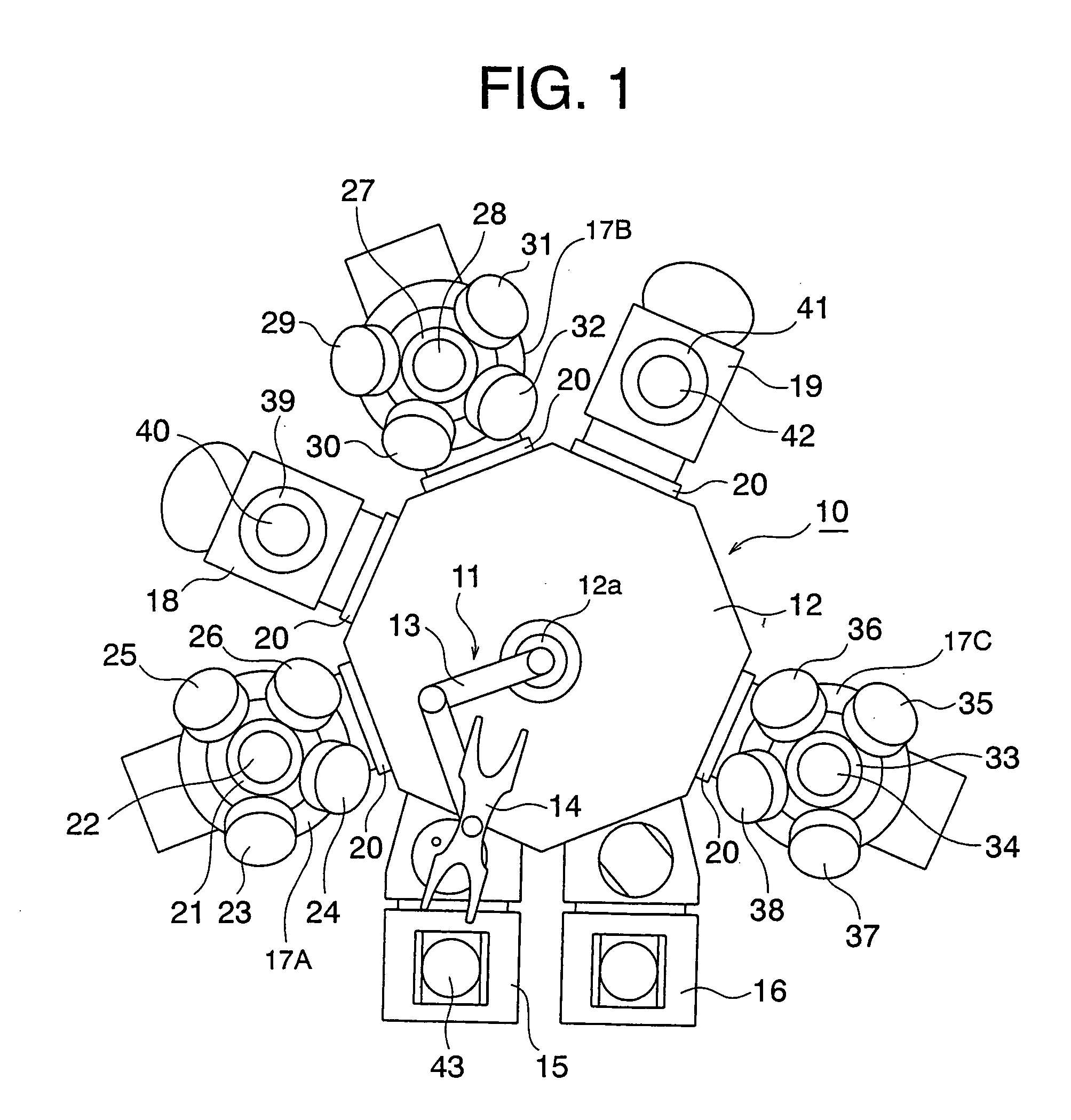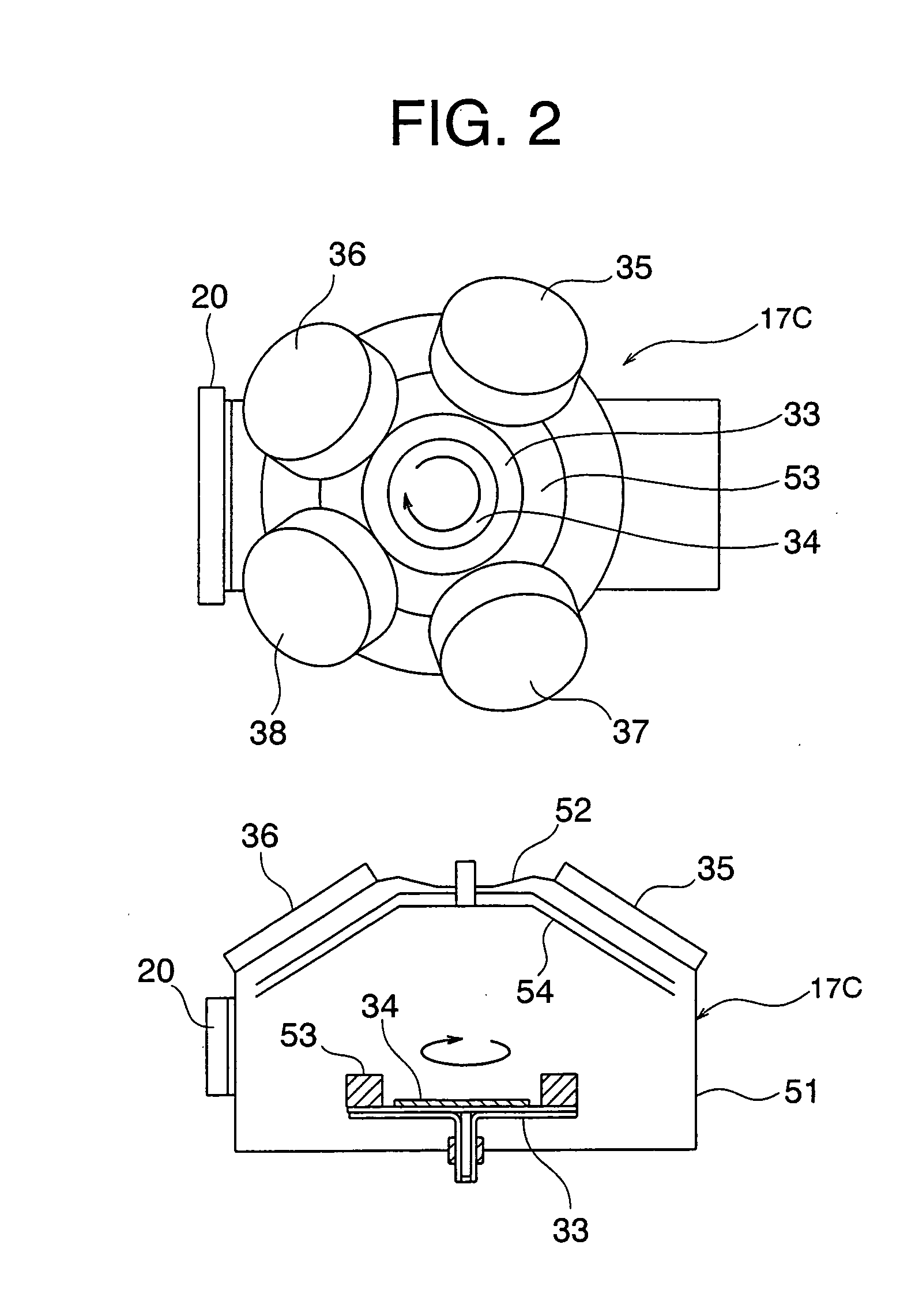Double-layer shutter control method of multi-sputtering system
a control method and multi-sputtering technology, applied in the direction of electrolysis components, vacuum evaporation coatings, coatings, etc., can solve the problems of complex changes, cross-contamination may be caused between targets, and become a conspicuous problem, so as to prevent cross-contamination
- Summary
- Abstract
- Description
- Claims
- Application Information
AI Technical Summary
Benefits of technology
Problems solved by technology
Method used
Image
Examples
first embodiment
[0094] An explanation will be given of a first embodiment of the double-layer shutter control method by referring to FIG. 8 to FIG. 11. This first embodiment shows an example of four targets and single sputtering using a first shutter plate having two holes and a second shutter plate having one hole. The double-layer shutter control method according to the first embodiment is for the configuration of the system shown in FIG. 1 to FIG. 3. In FIG. 8 and FIG. 9, for convenience for conceptually explaining the embodiment, the four targets are indicated by the notations T1 to T4, the two holes of the first shutter plate 61 facing the target are indicated by the notations H1 and H2, and the single hole of the second shutter plate 62 on the substrate side is indicated by the notation H3.
[0095] The targets T1 to T4 correspond to the targets 35 to 38 shown in FIG. 3, the holes H1 and H2 correspond to the holes 61a and 61b, and the hole H3 corresponds to the hole 62a. In the first shutter pl...
second embodiment
[0104] A second embodiment of a double-layer shutter control method will be explained by referring to FIG. 12, FIG. 13, and
[0105]FIG. 14A to FIG. 14D. This second embodiment shows an example of five targets, a first shutter plate and a second shutter plate each having two holes, and co-sputtering.
[0106] In FIG. 12 and FIG. 13, the five targets are indicated by the notations T1 to T5, the two holes of the first shutter plate 61 facing the target are indicated by the notations H11 and H12, and the two holes of the second shutter plate 62 on the substrate side are indicated by the notations H13 and H14. The holes H11 and H12 in the first shutter plate 61 are formed at positions 144° apart in the clockwise direction, while the holes H13 and H14 in the second shutter plate 62 are formed at positions 144° apart in the clockwise direction. Further, in FIG. 12 and FIG. 13, the circles 101 indicate the paths of movement of the holes H11 to H14 when the shutter plates 61 and 62 rotate.
[010...
third embodiment
[0123] Next, a third embodiment of the double-layer shutter control method will be explained by referring to FIG. 15A to FIG. 15E. This third embodiment is a method of a single sputtering control using the same system configuration as that of the second embodiment explained by FIG. 12 and FIG. 13 which performs the single sputtering after the co-sputtering of the second embodiment. Accordingly, the double-layer shutter control method of the third embodiment shows an example of five targets, first and second shutter plates each having two holes, and single sputtering. Further, in the single sputtering according to the third embodiment, the pre-sputtering is performed utilizing the position where the film is finally deposited at the time when the final main sputtering in the second embodiment ends (the film deposition position at the time of the main sputtering of FIG. 14D).
[0124] In FIG. 15A to FIG. 15E, the five targets T1 to T5, the two holes H11 and H12 of the first shutter plate...
PUM
| Property | Measurement | Unit |
|---|---|---|
| time | aaaaa | aaaaa |
| structure | aaaaa | aaaaa |
| magnetic | aaaaa | aaaaa |
Abstract
Description
Claims
Application Information
 Login to View More
Login to View More - R&D
- Intellectual Property
- Life Sciences
- Materials
- Tech Scout
- Unparalleled Data Quality
- Higher Quality Content
- 60% Fewer Hallucinations
Browse by: Latest US Patents, China's latest patents, Technical Efficacy Thesaurus, Application Domain, Technology Topic, Popular Technical Reports.
© 2025 PatSnap. All rights reserved.Legal|Privacy policy|Modern Slavery Act Transparency Statement|Sitemap|About US| Contact US: help@patsnap.com



